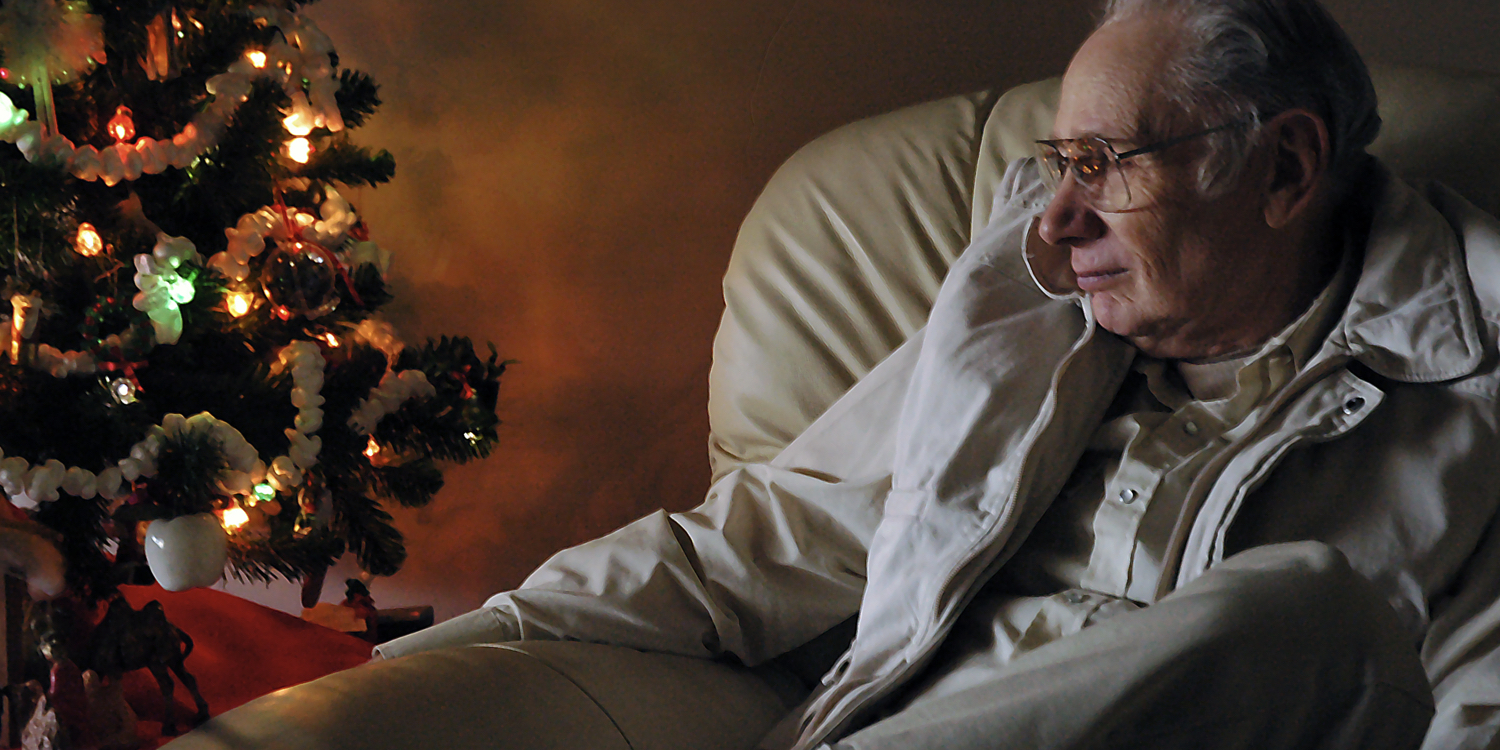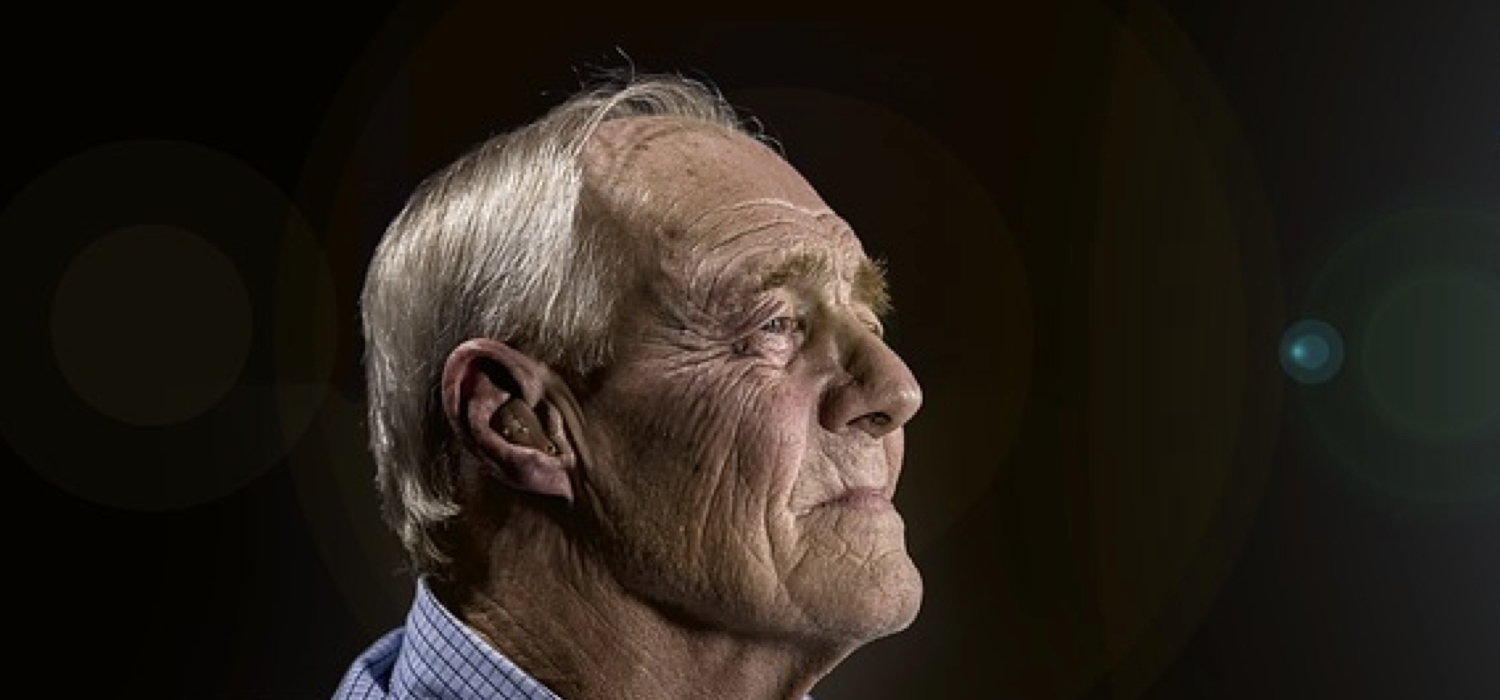Here are three reasons older mortgage applicants are rejected more than their younger counterparts.
Continue readingThe Gift – Reverse Mortgage Professional Services
On a macro level, reverse mortgage, like any professional service, can be viewed as a gift providing increased peace of mind and quality of life…
Continue readingHow to Create Happier Holidays for Seniors
For many older people who have lost their spouse, or who may be facing health or financial challenges, the holidays tend to exacerbate feelings of aloneness…
Continue readingWhen is it time to get help?
Tools for Family Caregivers
Millennials are at the forefront of easing the aging process for today’s elders, from tech innovations that enhance senior living communities, to apps that facilitate difficult end-of-life discussions.
But what happens even earlier in the process, when Mom or Dad (usually Dad!) refuses any sort of in-home help, except perhaps for the occasional housekeeper? How does a family know whether their loved one is truly safe living alone at an advanced age, even if he or she is still fairly healthy?
Nate O’Keefe had the same questions, so the Millennial entrepreneur founded Roobrik, a series of online decision tools designed to provide family caregivers with the information they need to make the right choices at the right time.
Roobrik offers a trio of assessment tools that help family members or concerned others (perhaps the senior’s reverse mortgage advisor, for example) determine whether changes to a senior’s lifestyle might be in order. Each tool scrolls through a series of questions, becoming more personalized with each response. Based on the respondents’ answers, Roobrik lets you know whether immediate intervention would be prudent, or if it’s safe to simply keep a watchful eye on the situation for now. The current tools include:
1. Is it time to get help?
2. Is it still safe to drive?
3. Is it dementia?
Preventing Exploitation
Tools such as Roobrik may also help reduce the incidence of elder abuse, which Chronic Care Advocacy calls “an under-reported epidemic” due to factors such as social isolation, lack of caregiver education, and reluctance to report. And it isn’t necessarily physical. According to the National Research Council, exploitation is the most common form of elder abuse.
The Older Americans Act defines exploitation as, “fraudulent or otherwise illegal, unauthorized, or improper act or process of an individual, including a caregiver or fiduciary, that uses the resources of an older individual for monetary or personal benefit, profit, or gain, or that results in depriving an older individual of rightful access to, or use of, benefits, resources, belongings, or assets.”
Protecting your reverse mortgage clients, prospects, and other seniors in your sphere begins with understanding the risk factors that innovators such as Roobrik are enabling families to assess, and knowing what preventive measures are available.
Caring for the Caregivers
While older adults with cognitive impairment may be at greatest risk of exploitation, a huge risk factor is caregiver stress and burnout. Some of the tech solutions to ease caregivers’ work can make all the difference, as can caregiver recognition that they can’t do it all, and need to care for themselves as well as for the elder in their charge.
In addition to communicating with other close friends and family members who can support the caregiver, the Office of Chronic Care Advocacy urges seniors to use professionals to ensure their financial and legal affairs are in order, including a properly drafted estate plan with safeguards in place.
When the circle of care extends to everyone involved — a network in the truest sense — elder loved ones, their families, caregivers, and professional associates will all be well served.
Their Nest Egg is Gone. Now What?
 We looked at some of the country’s oldest retirees, who found their callings and joy late in life and want to keep working for pleasure as well as profit.
We looked at some of the country’s oldest retirees, who found their callings and joy late in life and want to keep working for pleasure as well as profit.
But what happens when you’ve saved and planned for retirement — and then the rug beneath your feet morphs into a magic carpet of debt and disintegrates?
That’s what happened to one Boomer couple, now 66 and 71, who had all their ducks in a row for a rosy retirement. A triple threat (serial job loss, serious illness, and the financial markets collapse) combined to effectively eliminate their savings.
 To repair the damage, the couple invited their son and his family to move in while they tried to sell their house and move to a more affordable location. Too bad they didn’t know about or perhaps didn’t consider, a reverse mortgage, which might have been the ticket to a smoother ride through the rapids. Now, even with the husband once again employed, they are saddled with massive credit card debt.
To repair the damage, the couple invited their son and his family to move in while they tried to sell their house and move to a more affordable location. Too bad they didn’t know about or perhaps didn’t consider, a reverse mortgage, which might have been the ticket to a smoother ride through the rapids. Now, even with the husband once again employed, they are saddled with massive credit card debt.
Some financial pundits hold the opinion that owning a house itself is the culprit, and advise seniors to pay off their mortgage and rent in retirement. Yet this suggestion undercuts everything many older adults have imagined and planned for their entire lives: living out their days secure in the knowledge that their longtime home will see them to the end of life in comfort and security.
Clearly, housing is the overarching expense in retirement as it is in our younger years, as confirmed by a recent Employee Benefit Research Institute report. Yet it’s not the only concern — or expense. While paying for a roof over their heads remains a constant 40-45 percent chunk of expenses in retirement, medical costs rise sharply. By age 90, the report states, “health care expenses account for more than 20 percent of the households’ entire budgets.” End-of-life health care costs can be astounding, even with Medicare: those in the 95th percentile of health care spending in 2011 spent almost $30,000, while those in the 25th percentile spent less than $1000.
Preparation and adaptation are key. Whether or not a dream job is on the cards for a senior, knowing they will be able to remain in their home is essential. Awareness of the evolving reverse mortgage option and how this might benefit their nest egg is smart recourse when creating a retirement planning toolkit — especially since the mass affluent are already using HECMs strategically to support their portfolios in a down market.
Cars that Will Drive Miss Daisy — By Themselves

The emerging self-propelled or “robocars” lend new meaning to the word automobile — and may be the answer to aging drivers’ diminished capabilities to safely navigate behind the wheel, say Joseph Coughlin and Peter Diamandis.
While Coughlin focuses on the importance of consumer education to spur adoption of the new technology, Diamandis (who holds degrees in aerospace engineering, molecular biology, and medicine) says autonomous cars are just a small slice of the endless ways in which AI (artificial intelligence) is going to reshape and enhance our lives.
In a recent Forbes blog, Diamandis waxed rhapsodic about how self-driving cars will command a huge number of time and money saving no’s, to wit:
- NO steering wheel, NO gas pedal, and NO brakes. It sounds a little like riding a trolley (though the latter are controlled by human conductors). A bit scary, perhaps, especially for seniors…
- No garages, no driveways, no parking: autonomous cars will simply pick up and drop off passengers like taxis or buses, remaining in constant use. Minus private ownership, the need to store the vehicle vanishes like a sprinkling of rain on a sunny day.
- No new roads, less traffic. These sensor-driven cars are efficient in the extreme, so they can “pack” much more densely on the road without risk of an accident.
- No mandatory car insurance: self-driving cars are engineered to avoid crashes.
- No ownership, just “on-demand” usage. So reverse mortgage recipients can scratch car maintenance from their list of expenses.
Yet such dramatic change from our current state of vehicle ownership begs the question: in a society that reveres both cars and status symbols, will drivers — especially those who love their classic cars or Bentleys — be willing to give them up so easily? And who will be responsible for maintaining these public conveyances? Who pays for (and pumps) the gas, checks the oil, replaces the tires, or brings the car in for regular tune-ups? Even if robocars are smart enough to know when they need maintenance, who will own this responsibility?
As we explored in an earlier post on safe senior driving and alternative modes of transportation, multiple warning signs can alert family members if grandma or grandpa is no longer safe in the driver’s seat. In this case, an autonomous car can be a positive option. And, contrary to what we may see on the road, older adults are the leading car buyers today: the University of Michigan Transportation Research Institute reports consumers between 55 and 64 lead all new vehicle sales. (Possibly fueled by their reverse mortgage loans and the time to pursue their passions.)
So while the idea of fewer cars on the road, massive fuel savings, less pollution and greatly reduced risk of auto accidents sounds fantastic, “learning to trust and use these [new technologies] is a work in progress,” says Coughlin. “Responding to the changing driver experience, AARP’s Driver Safety Program, the largest driver education program catering to the 50+ market, demonstrated leadership by recently revising its curriculum to include content on new vehicle technologies.”
Hopefully, they’re also factoring maintenance into the mix. No doubt the robocars will include anti-theft programming, too. By the time most Boomers are ready for them, autonomous cars may be able to transport elders with varying degrees of physical ability safely and efficiently wherever they choose to go. Now that’s autonomy!
Ending 2018 on a Grace Note

Year-End Ideas for Your Senior Clientele
In music, a grace note is considered “non-essential,” an ornamental embellishment — yet something about it distinguishes the piece, or the composer would have omitted it. It’s the same with a signature piece of jewelry or a personalized flourish on gift wrap: the effort adds an ineffable, lovely meaning for the recipient.
This time of year can be challenging for seniors and their families alike, particularly if a family member is serving in a caregiving capacity.
Here are some simple ways you can create grace notes to close out the year, as part of your reverse mortgage mission of senior service:
- Reach out, reconnect. Have you kept in touch with your past reverse mortgage clients? How about prospects who didn’t pursue the loan application, or for whatever reason chose to wait? This might be an excellent time to reconnect — not in business mode, but because you care about their welfare and want to know how they’re doing. The phone call or visit will be sure to brighten the senior’s day — and you never know how this caring contact will, in fact, benefit your business down the road. Kindness has a long memory.
- Play Santa. A festive holiday open house is always a delightful way to show your reverse mortgage clients, potential clients, referral resources and friends how much you appreciate them. Hold the gathering during daylight hours in an easily accessible location to encourage your older invitees to attend. If your community provides paratransit or similar senior transportation services, arrange for those you know will need a ride to be picked up, and taken home later on.
- Be a snail. In our digital age, when even nonagenarians are device-adept, it’s a real treat to receive an old-fashioned holiday card in the mail. Buy a box of nonsectarian greetings, and add a personal message before signing your name. For some seniors, this will be the only holiday card they receive — and it will be treasured, Anyone, of any age, would like to be remembered — especially at this time of year, whether they celebrate the holidays or not. There’s an elusive feeling of inclusiveness that permeates the season, and nobody wants to be left out.
- Lend an ear. Community service is especially welcome during the holidays when extra hands and attentive ears are greatly valued. Your local senior center, or a community group that caters to mature adults, will be grateful for any time you can devote to serving their members. Offering a receptive ear for an hour is quite a gift, magnified ten-fold if you’re able to visit someone who is housebound.
- Collaborate and co-create in 2019. This time of year is also a timely moment to reach out to your referral resources and show gratitude for your business relationship. Contact the CPAs, financial planners, tax advisors and other professionals you work with who serve the senior market and offer to hold an informal New Year’s Q&A to update them on HECM changes, as well as educate their staff, clients, and associates.
As you put these ideas into practice, you’ll be playing the grace notes that set your reverse mortgage business apart in an elegant, important way. Happy 2019!
Looking for more reverse mortgage news, commentary, and technology? Visit ReverseFocus.com today.
How to Create Happier Holidays for Seniors
For many older people who have lost their spouse, or who may be facing health or financial challenges, the holidays tend to exacerbate feelings of aloneness…
Continue readingReimagining Home — And Travel
One of the great blessings of being physically and financially fit in later life is the ability to travel. For couples with both partners in good health, the traditional model works: book a travel package or a cruise, stay in fine hotels, take lots of pictures and return to the nest.
For the next wave of seniors, however, this picture is shifting. Among Boomers, there’s a boom in gray divorce. Or someone may be a silver single due to losing a spouse, yet still long to travel, seeking a safe as well as enjoyable experience.
Millennials may have the key: new nomadic ways to live “location independent” (L.I.). Their solutions can work for the silver set.
Hotels Are So 20th Century
A number of emerging sites offer a creative way to travel at a much more comfortable level than couch surfing or hostels. These innovative businesses are a nexus of work, travel, and adventure, providing both connection and potential companionship — an attractive invitation for seniors traveling solo, as well as with friends and spouses.
Though mature travelers may not desire to be fully L.I. like their younger counterparts, living nomadically in spurts is eminently possible with a reverse mortgage. While a senior with a HECM must maintain their home base as their primary residence, extended stays elsewhere are fine; each return to the house ‘resets’ the clock for absences.
And that’s good news for those who own a home and choose to apply for a HECM. Because living as a short-term nomad has never been more appealing — or accessible. Consider these options:
Romancing the Road
 Roam provides high-end co-work/co-live spaces in desirable destinations such as San Francisco, Bali, and Tokyo, with other locales in development. Someone retired, semi-retired, or whose work is fully remote, can enjoy privacy and comfort among a diverse community for a week, a month, or longer, then return home refreshed.
Roam provides high-end co-work/co-live spaces in desirable destinations such as San Francisco, Bali, and Tokyo, with other locales in development. Someone retired, semi-retired, or whose work is fully remote, can enjoy privacy and comfort among a diverse community for a week, a month, or longer, then return home refreshed.
Behere describes itself as the platform for women to live in cities around the world, without long-term contracts or obligations.
It might be an older woman’s answer to traveling alone: a foreign living experience that provides carefully curated, fully furnished apartments close to city centers, with a vetted city host, workspaces — even a fitness membership. With this flexible foundation, a senior woman can live in a new city, one month at a time, immersing herself in the local culture and community to the degree she chooses.
Then there’s Unsettled, which, as it name implies, is designed for those in transition. The Unsettled experience offers retreats in locations from Tuscany to Morocco, Buenos Aires to Bali, and features an inclusive global community that includes entrepreneurs, freelancers, or anyone who is seeking new perspectives, inspiration and growth. Since many Boomers fall into one or all of these categories, Unsettled might call to them as a different sort of travel adventure.
Traveling Safely: Wallet Medical Cards
So a senior decides roaming the third millennium way sounds appealing, and proceeds to use some of their HECM proceeds for a grand adventure. Are they prepared for what might happen in a foreign city — even if it’s within U.S. borders?
Don’t be a walking medical mystery, counsels speaker Dick Schaaf, who travels frequently for business. He says, “Anyone who travels may someday find themselves in need of medical assistance. But if you’re alone, and unable to answer even basic questions about your health at the moment of need, valuable time can be lost — and potentially fatal mistakes can be made — while first responders and medical personnel try to figure out what to do.
“For years, my wife and I have carried homemade medical info cards in our wallets. Mine has my name, date of birth, my cellphone number plus hers, a list of all my medications (correctly spelled name, dosage and frequency), plus my blood type, known allergies, insurance providers (no account numbers, though), and the fact that I’m an organ donor.
“I print six business-card-sized cards with all of this information on card stock. One copy goes in my wallet. One of mine goes in my wife’s, with one of hers in my wallet, too. Other copies go into travel carry-ons plus our passports, and we keep a set on our desks, which greatly simplifies updating medical information when we’re talking with our physicians, dentists, etc. I date the cards each time I update and reprint the info so we always know we’re carrying the most current versions.”
“Surbia”: A New Idea?
Despite the sense most of us have that the homes we inhabit are typical of life in America, the concept is scarcely a century old. Bruno Haid, the founder of Roam.co penned an enlightening read about the evolution of American housing.
Home today is less where one’s mortgage (or reverse mortgage) is, and more about the lives we live in them, regardless of location, he says. This is what’s given rise to the spate of new short-term co-living environments.
Once all the particulars of how we may live are handled with a high degree of efficiency, we can focus on the experience — what it really means to have “the time of our lives”.
This quest to redefine “home” has also given rise to surban communities, a portmanteau of suburb and urban (or just a contracted form of suburban). In an era when cars are much less essential than they use to be, with rides available at the swipe of a smartphone, this form of mixed use living, which weds the best of cities and suburbs, is attractive to many retirees.
And with a surban setting and HECM available, the next adventure beckons.
The Positive Death Movement: Putting the ‘Fun’ in Funeral
While you might think seniors would be the last people to want to “romanticize” dying, bringing death out of the closet is actually healing…
Continue reading










